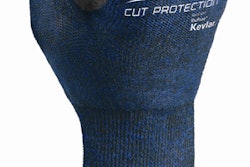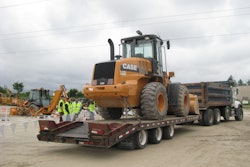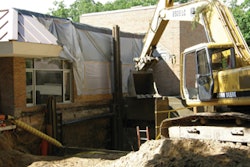
Optimism and doubt both emerged when Nevada labor leaders discussed whether worker safety will radically improve as a result of harsh new findings by federal officials, who documented shortfalls in the state's occupational safety program.
Steven Ross, an officer of a Southern Nevada labor council, was the optimist.
Paul McKenzie, an officer of a labor council in Northern Nevada, was the pessimist.
"The message I want to give you is, it is a new day," Ross told the newspaper by telephone Thursday. He wasn't just referring to the blunt, extensive recommendations for change contained in the federal report, which was released this week. He also mentioned the new heads for Nevada's Occupational Safety and Health Administration, and for its Division of Industrial Relations, which houses the OSHA program.
"I think Nevada OSHA is grateful the feds have stepped up to the plate," said Ross. He described the state as crossing a threshold to better oversight and better coordination between new state safety leaders and organized labor.
Ross is secretary-treasurer of the Southern Nevada Building and Construction Trades Council, which has about 17 trade union affiliates. He is also a member of the Las Vegas City Council.
But McKenzie, who is secretary-treasurer of the Building and Construction Trades Council of Northern Nevada, questioned the efficacy of any changes to state OSHA, as long as it is housed in the Nevada Department of Business and Industry.
"The bureaucracy ... at the top of OSHA spends more time protecting business and management than they do workers," he warned. His council has about 17 union affiliates, too.
McKenzie does not credit the long hiatus in construction deaths on the Strip - the last occurred in June 2008 - to better performance by Nevada OSHA or construction companies. He attributes it mainly to construction at CityCenter passing from the high-risk phase of foundation and outdoor structural work to a lower-risk phase of interior work.
The federal report, released Tuesday, analyzed Nevada OSHA's activity from January 2008 through June 2009. During the 18 months studied, 25 workplace deaths occurred statewide, according to state OSHA. Fourteen of those occurred in construction; five of them on the Strip. Other Strip construction deaths happened before the study's review period.
Of the 25 workplace deaths, 13 were of natural causes. Two were gunshot deaths - one a suicide, the other a murder. Dr. Edna Makabenta died at her Las Vegas medical office on Jan. 12, after an elderly patient gunned her down.
Despite the Strip's improved construction statistics, other construction workers died in accidents in Southern Nevada during the study period - at McCarran International Airport, at the Hoover Dam bypass site and at a Clark County Water Reclamation District site.
McKenzie was also highly concerned about accidental deaths that occurred in Nevada's "general industry," which excludes construction. Southern Nevadans also died from accidents during the study's period at a casino theater's backstage area, an industrial laundry and a lighting company's warehouse, among others.
The federal report faulted Nevada OSHA's management and legal counsel for failing to pursue the maximum penalties for flagrant, repeated or deliberate violations. The report also criticized the agency's failure to target inspections according to known hazards, its failure to consistently track and document correction of violations, as well as unrealistically high caseloads and low training levels for OSHA inspectors.
Both Ross and McKenzie said they worry how much Nevada OSHA can afford to spend for changes during the present economy, which is generating sickly tax revenues.
The U.S. Labor Department announced this week that it intends to similarly investigate other states that run their own OSHA programs, but spokeswoman Diana Petterson said Friday she does not know which state agency will put under the microscope next.
Contact reporter Joan Whitely at [email protected] or 702-383-0268.



















